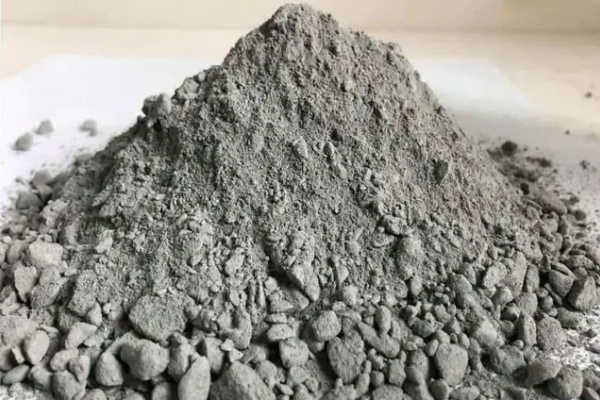
Abrasion-resistant castables are characterized by resistance to pressure, folding, and wear. This has a certain relationship with the process of Scooby-Doo and the raw materials used.
High-strength abrasion-resistant castables are suitable for use in the severe abrasion parts of industrial kilns. They are denser and more resistant to abrasion than the general refractory castables, and they can withstand the impact at high temperatures and carry soft and large loads of shear resistance.
Abrasion-resistant castables are characterized by resistance to pressure, folding, and wear. This has a certain relationship with the process of Scooby-Doo and the raw materials used. The raw materials used in the wear-resistant material have high aluminum content and high bulk density, and the particles in the process ratio are also larger than the general material. Adding a certain proportion of silicon carbide compound in the process can improve the folding and wear resistance of the castable.
Wear-resistant castables can increase the tensile capacity and better use effect if a reasonable proportion of steel fiber is added. When producing, adding heat-resistant stainless steel fiber to the aggregate and powder can prevent the rise difference under the high-temperature state, and can resist the stress caused by the change of temperature gradient when starting and stopping the furnace, and due to the addition of steel fiber, the integrity of the furnace wall after casting also increases the ability to hold position. If the stainless steel added is nickel-plated stainless steel, it is more resistant to high temperatures, and can also enhance the anti-rolling performance, enhance fatigue resistance.
High-strength wear-resistant castables are also distinguished by different body densities and indexes, which are chosen according to the furnace temperature and furnace atmosphere.
High strength abrasion resistant castables are most suitable for use in the front and rear arch walls of various boilers, as well as in the walls of waste incinerators, and composite abrasion-resistant castables are often used in electric furnace covers, heating furnace bottoms, cement rotary kiln kilns, stall rings, وأجزاء أخرى.
Anchor bricks play a skeleton role in refractory castables. Anchor bricks have another name: hanging bricks.
Several products play a skeleton role in refractory castables: one is the anchor brick, another is the anchor piece, and the third is the tortoise mesh. Anchor pieces and tortoise mesh are metal products, only the anchor brick is a refractory product.
There are many shapes and links of anchor bricks, and their sizes vary. على العموم, they are made according to the customer’s customization. There is also a part of the regular length of 330, 380, 440, and 500m thickness is generally around 100mm anchor brick, its role is in the role of the refractory castable liner.
There is a difference between anchor bricks with and without holes, and the difference between the use with holes and the use without holes for the furnace roof and furnace wall. The use is embedded in the casting material, and there is also a hanging piece hanging up, so it can be called a hanging brick.
The anchor is directly welded to the furnace shell, and when the refractory castable is poured, the anchor is buried in the liner to play the role of anchoring and connection.
The most commonly used ones are Y, V, and L shaped, the height is determined by the thickness of the refractory castable if the thickness of the castable is 200mm, the height of the anchor can be 160-180mm, the anchor is easily oxidized under high temperature when buried in the castable liner, it depends on the thickness of the liner and the use temperature.
Anchor bricks are refractory bricks made of raw materials technically proportioned, then molded, then sintered, بقوة عالية, good thermal shock stability, and toughness. لكن, the mold of anchor bricks is a difficult part of the production process, the grinding tool is complex and difficult to make, and the mold cost is much higher than the general refractory bricks.
Anchor bricks if with holes, installation holes are generally in the neck. The finished anchor brick should not have cracks and the size should be accurate. Convenient for use in the furnace roof. Anchor bricks generally use three-grade high alumina more, because three-grade high alumina anchor brick has toughness. Although the first-grade high alumina brick has good quality, the hardness also increases, and it is easy to crack when it is used in the general pouring material.
The anchor brick plays the role of skeleton connection in the castable, which is made according to the user’s requirement when producing, but there must be no cracks, which will easily fall off and affect the use of refractory castables.
منذ أكتوبر, استمرت أسعار الألومينا في الارتفاع, and China's largest bauxite importer - a…
أولاً, ارتفاع طوب الألومينا: The Leader In High Temperature Refractories As a leader in high-temperature…
The application of refractory bricks in the kiln immediately endangers the operation rate of the…
Analysis Of The Causes Of Common Quality Problems In Tunnel Kiln Construction And Measures To…
Corundum quality refractory castables are made from corundum to the new jade refractory insulation material…
تحليل المواد الخام المقاومة للحرارة من الألومنيوم والسيليكون البروفيسور. Li Yong of the University of Science and…